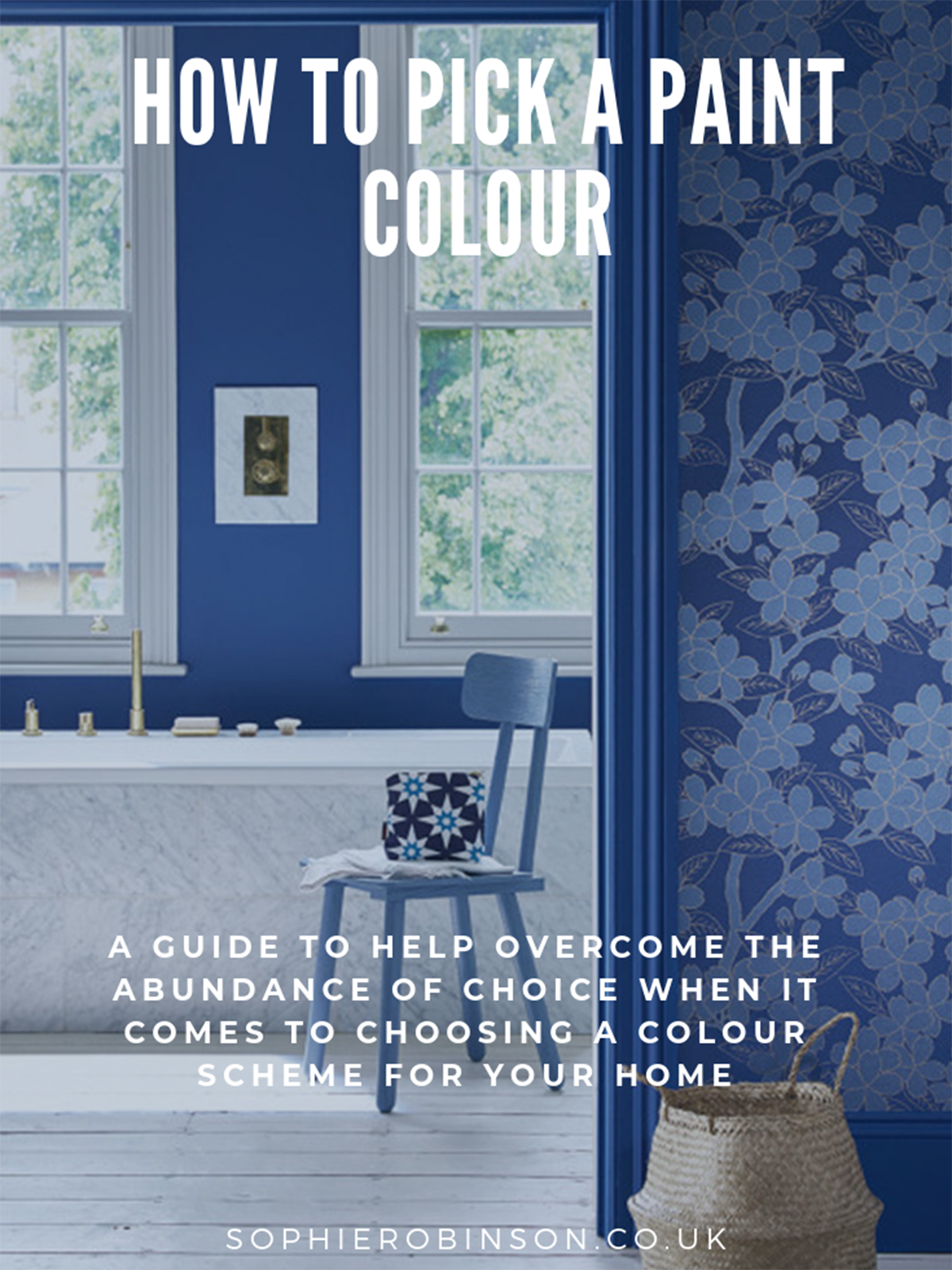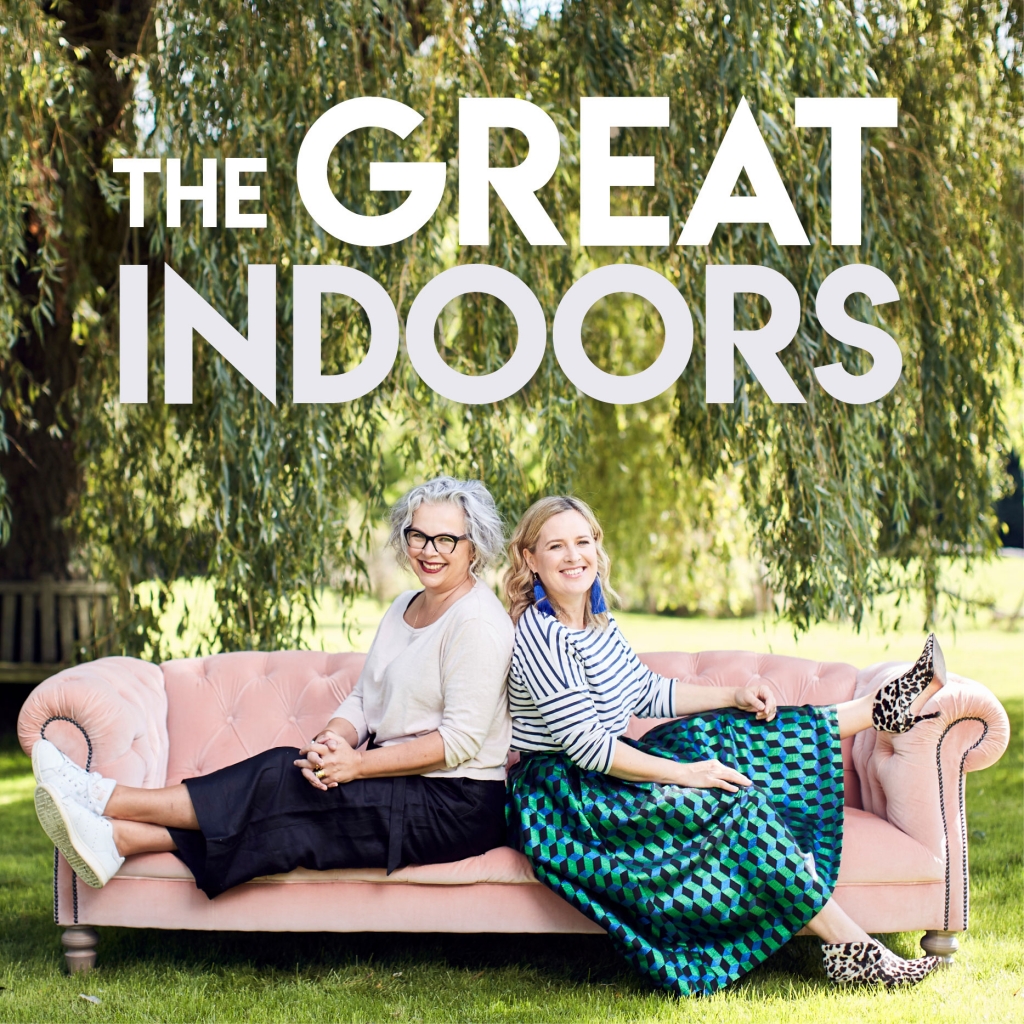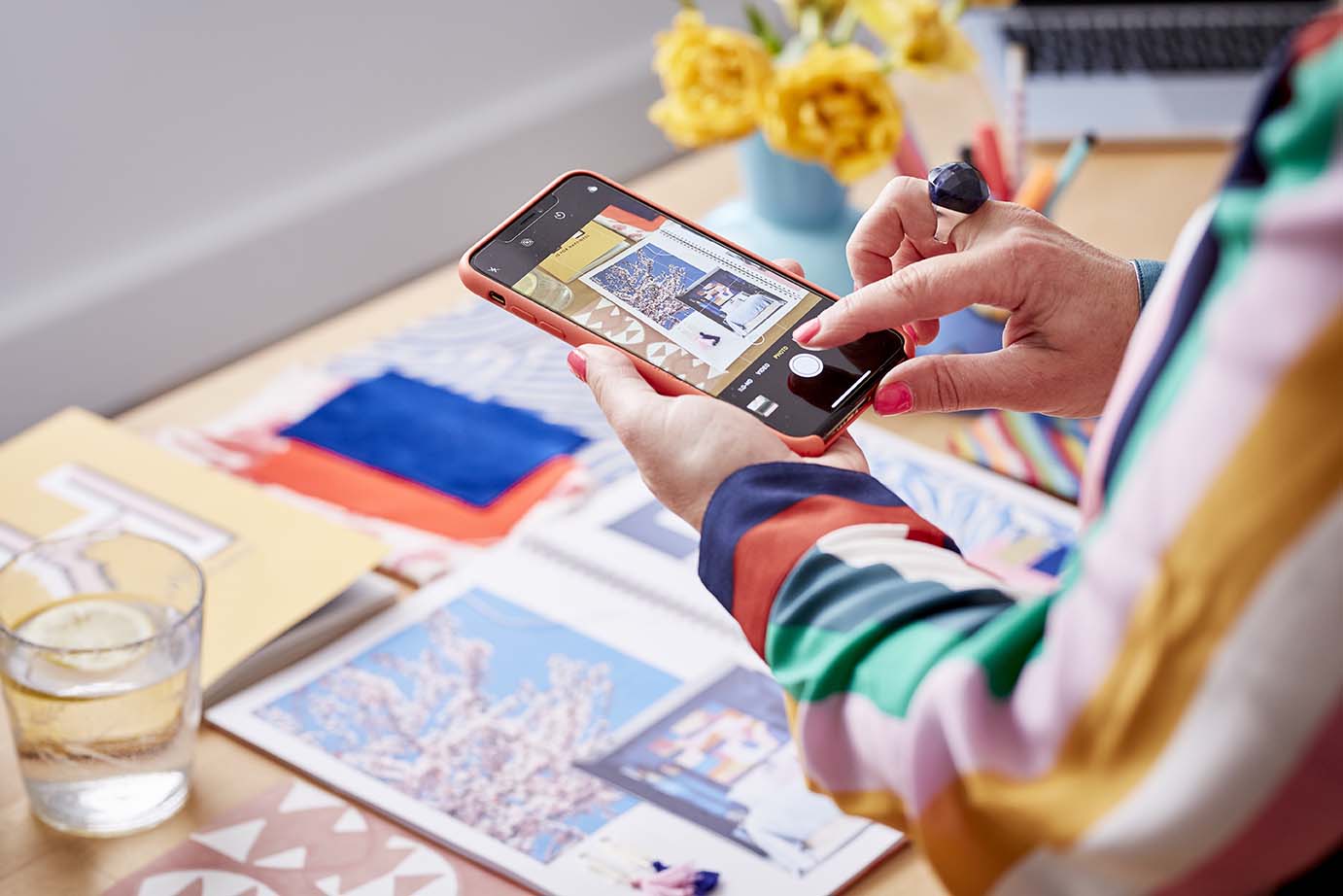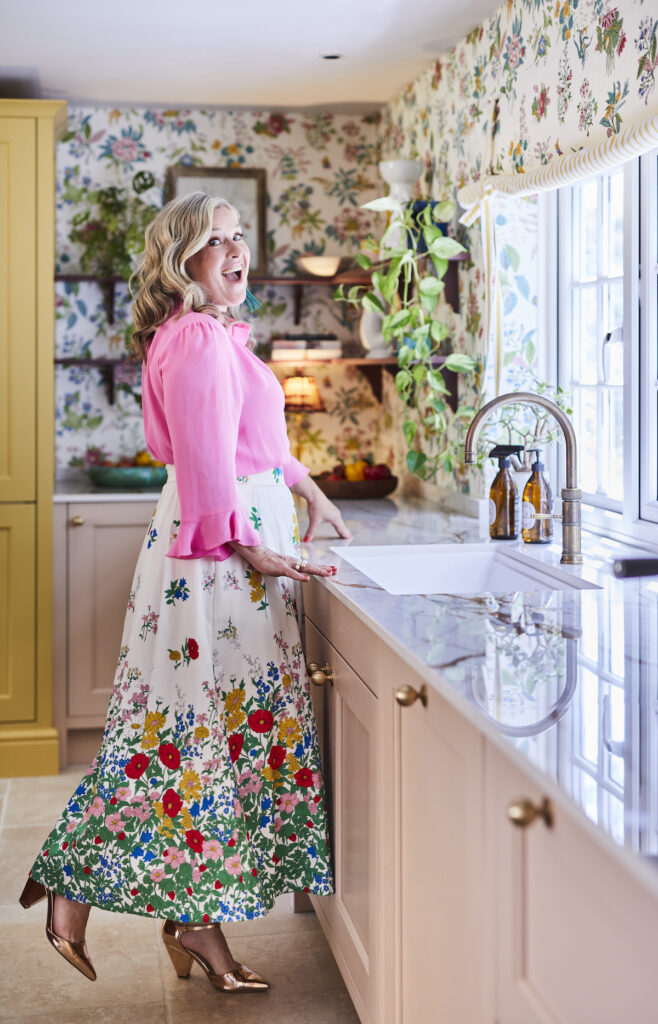How to create a colour scheme
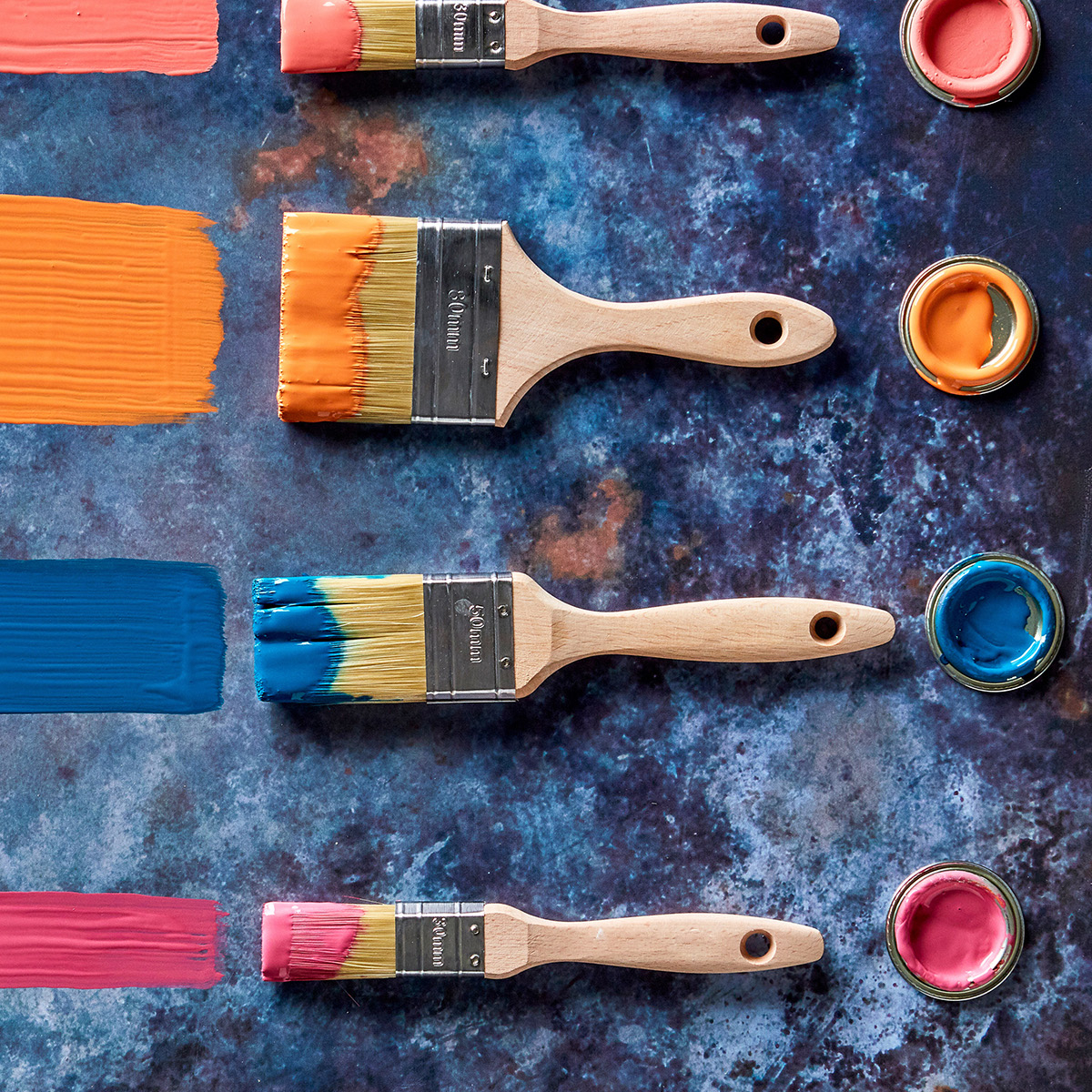
Picking the perfect colour scheme to daub on your walls can be a very daunting decision, and ‘what colour should I paint my walls?!’ is something I get asked alot! I think it’s possibly one of the reasons people go for the oh-so-obvious beige tones. If you are a neutral type of soul then there’s nothing wrong with that, but if you have an inkling that you’re a colour lover- its time to get empowered!
When it comes to pulling together a colour scheme you need to get a feeling for what goes with what and create a palette of colours that sit together pleasingly. Rule number one is you can’t pick a wall colour in isolation, you need to think about what other colours you will combine with it too. Myself, as well as many designers do this instinctively but for some it can feel like you just don’t now where to start. It’s sometimes a good idea for all of us to go back to the basics and look at a tried and tested way to combine colour and consider the effects of these combinations. The colour wheel is a fail-safe way of working out what works with what- anyone who works with colour; interior designers, artists and architects have all learned the theory in order to create colour palettes.
The classic colour wheel is made up of 12 hues- one half features the cool colours (lilacs, blues, greens) and the other the warm hues (reds, oranges, yellows). You’ve then got your Primary, secondary and tertiary colours as you work away from the primary- you keeping up?!
In the modern colour wheel, you begin with red, blue and yellow as they are what all colours derive from. The secondary colours are then made by mixing two of the primaries together…remember doing this in primary school! Tertiary colours are then made by mixing a primary with a secondary to give us lime green, turquoise, magenta, peach, deep purple and so much more. There are boundless tints, shades and tones wheeled out, by mixing different combinations, all called tertiary colours. We are very lucky that our paint manufactures know all this stuff, which is why we have such a mind-boggling choice on offer!

A monochromatic scheme of varying shades of a warm teal blue which uses accents of natural wood and texture to add interest. Image by Overstock
So all the technical bit aside, you probably just want to know what looks good with what!
Monochromatic style
When you hear the term monochrome you probably instinctively think black and white. But that’s not the case, you can easily pull a monochromatic colour scheme together, using different tones and tints of your chosen colour that will sit harmoniously. This is what will keep it interesting. Plus, it makes using bold or contrasting patterns very simple to incorporate- as you just match them by colour. You can add interest by being creative with varying textures and choose a colour that will then work with different shades and tones. Take a look at a strip of Dulux or Crown paint chart- to see how it works. To be truly monochromatic, everything should be in your chosen hue- but I think it’s totally fine to mix neutrals like white, grey, metal and wood into the mix. You don’t need to look like you live in the emerald city!
Harmonious colours

The jewel-like tones in blue and green are a complimentary colour palette. While still strong the effect isn’t so high contrast and striking and suits an elegant scheme – and who could resist a velvet button-back sofa like the Oscar from Sofa.com
Choose two or more colours that sit side by side on the colour wheel and you get what’s called an Analogous colour scheme (you learn something new every day- not your everyday conversation starter), or more commonly known as harmonious colour scheme. What you need to know is that this is where all the colours are from the same family so to speak. So sit red next to orange, blue next to violet or yellow with green. One old saying I don’t think washes is – ‘blue and green should never be seen’ – I think they look fab together, don’t you agree? They are colour wheel neighbours after all. The effect of harmonious colours is cohesive and elegant and therefore often calm. Nothing jars or pops out. However if this was me designing the above scheme, I couldn’t resist adding a little fuchsia pink vase of flowers just to give the room a little ‘pop’. So while these are rules, don’t be afraid to be creative and playful too.

The mix of bright and bold colours isn’t too over powering due to the limited use of harmonoius colours. The cool neutral white paint stops the warm colours from feeling too ‘hot’. The signature rug by Carpetright adds a cohesive focal point where all the colours come together.
Contrasting colours
They often say opposites attract and it couldn’t be more true when we’re talking about contrasting colour schemes- but like any winning relationship just make sure they complement each other. The contrast of the colours positioned opposite one another on the colour wheel make for interesting and arresting combinations. I also think it works well when you mix warm and cool shades together as they can balance each other out. For example I love the way the orange tones in real wood warms up an otherwise chilly blue scheme or fresh green cuts through a over bearing red scheme. But the really important thing to know here is your complimentary colours create dynamic colour schemes! They certainly create an impact and demand attention. This is why I love using them, but they are rarely relaxing!

A striking inky blue and orange scheme is what we call a contrasting colour palette. The added white acts as a neutral to balance the strong colour contrast. I love the bold geometric floor in contrasting balack and white that gives this room extra ‘wow’. Image by Annie Sloan
So there we have it- the colour wheel in a brief nutshell. Personally, I don’t tend to use it when I design a room scheme as I generally like to go with my gut- and I’m sure that’s how a lot of designers work. So I’d advise that your next step would be to have some fun and play around with a mood board and some paint chips. Interior design shouldn’t be painting by numbers and following rules – it’s all about how the colours make you feel and you’ll soon get the feeling when something looks amazing- so have a go…it’s only paint!!
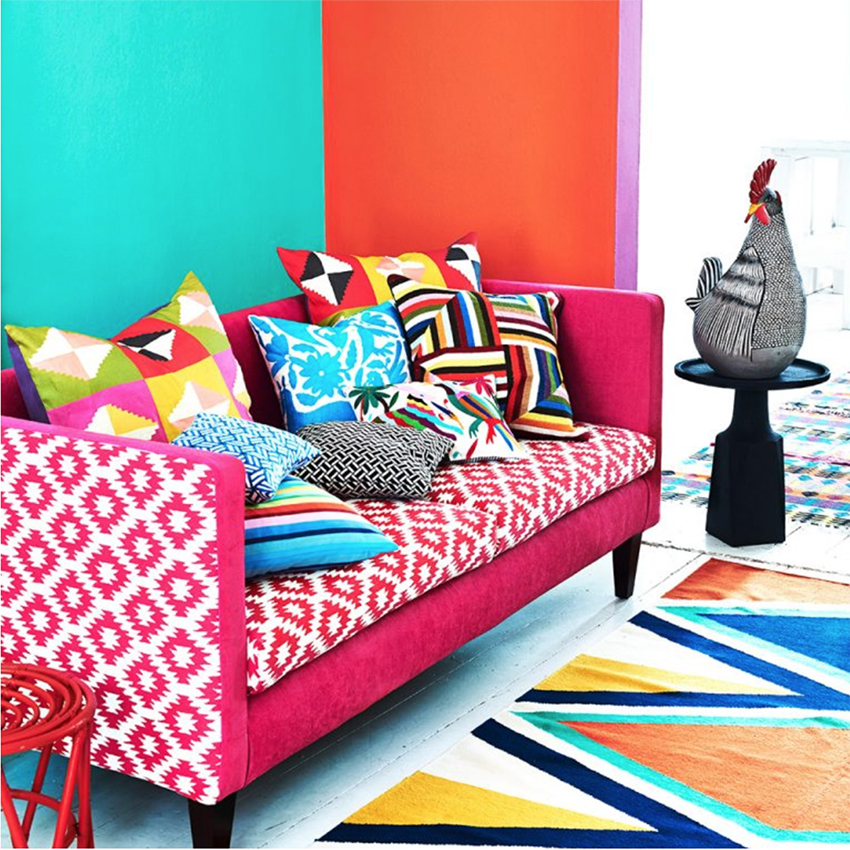
A riot of contrasting colours creates a fun and eye-catching scheme. Image by Homes & Gardens
Don’t forget there are digital visualisers available too such as the Dulux one where you upload a photo of your room and just have a play with different colours to help you ‘visualise’ how the room will look.
Check out my video here, where I share my secret to picking the perfect paint colour.
Featured image at top: Sanderson
Image research and editing by Luisa Ferdenzi-Rouse



